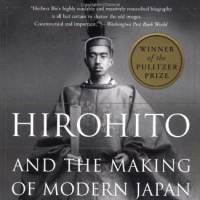"Hirohito and the Making of Modern Japan," first published in 2000, is a comprehensive and convincing biography of the wartime Emperor Hirohito and one which set out to shatter the myth that he was merely a figurehead, isolated from the power play that saw Japan militarize on a massive scale.
Hirohito and the Making of Modern Japan, by Herbert P. Bix
Harper Perennial, Nonfiction.
Herbert P. Bix, a former professor of history at Hitotsubashi University, provides a detailed account of the life and reign of Hirohito, but the book's real meat is in its examination of the war years and the role of this "scared and inviolable leader."
Bix argues that Hirohito was, on the one hand, an aloof and reclusive figure, as are all monarchs to some extent: "He was a reticent person who spoke most eloquently sometimes by not speaking at all." Bix contrasts this with an alternate view of a dynamic and energetic emperor, who "projected the defensive image of a passive monarch," which, coupled with American desires for continuity, allowed him to remain as head of the Chrysanthemum Throne up until his death in 1989. Details of Hirohito's life and, crucially, his reign during World War II continue to be published and his actions, or inaction, continue to divide historians and the media. Bix's Pulitzer Prize-winning book builds an understanding of a figure who cannily realized the value of projecting alternate images of himself in his dealings with generals, politicians and the Imperial Court.
Read archived reviews of Japanese classics at jtimes.jp/essential.

















With your current subscription plan you can comment on stories. However, before writing your first comment, please create a display name in the Profile section of your subscriber account page.